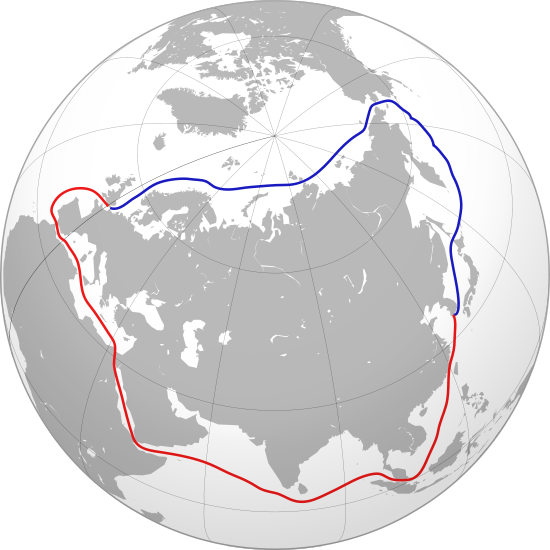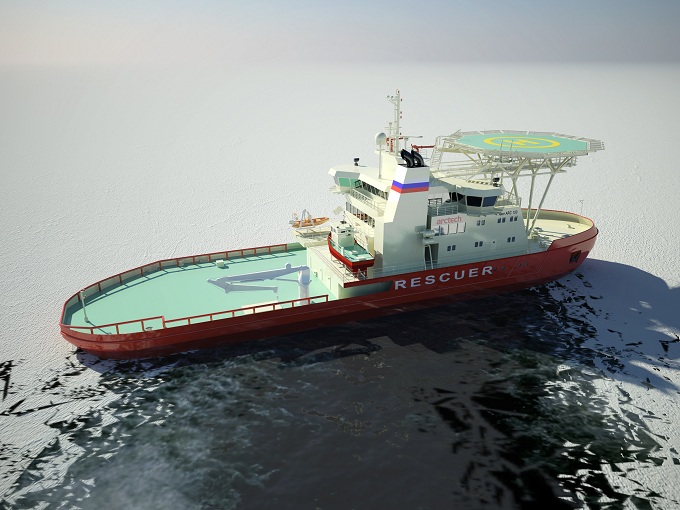The ship’s name is Baltika. You would expect this vessel to be a military one with advanced weaponry. It is not.
Baltika is an icebreaker. While conventional icebreakers do their job by sailing head-on or rear-on into ice, Baltika does so sideways.
This €76 million vessel was ordered by the Russian Ministry of Transport in 2011, and built by Finnish company Arctech. It is scheduled to be delivered to Russia in the spring of 2014.
What’s so special about Baltika?
This is a case of simple mathematics.
A vessel using its side to break ice covers more surface area than a regular icebreaker using only its head or rear.
More surface area means more efficiency, with fewer ships required to break ice, and ultimately, this means more cost savings.
Baltika's success in the Arctic Circle could mark the beginning of more research and development into technologies for man to conquer the hostile conditions there.
Singapore’s prosperity is tied to Arctic ice
The ice in the Arctic Circle has everything to do with Singapore’s future.
Whether or not global warming is real, the ice up north has melted considerably in the last decade.
This allows ships to sail through that frigid route, offering passage between East Asia and Europe, two months in a year. That route is called the Northern Sea Route (NSR).
 A comparison between use of the North East Route (blue) and an alternative route through the Suez Canal and Singapore (red) [Source: Wikipedia]
A comparison between use of the North East Route (blue) and an alternative route through the Suez Canal and Singapore (red) [Source: Wikipedia]
Singapore lies on the intersection of seaborne trade.
Singapore’s strategic location makes it the preferred port of call for more than 130,000 vessels.
A good chunk of Singapore's GDP and prosperity is tied to its status as one of the busiest ports in the world. This could change if the NSR becomes a viable alternative for ships wanting to sail from East Asia to Europe.
The journey would be up to 33 percent shorter and probably cheaper on fuel cost.
The implications of decreased sea traffic coming to Singapore are unknown, but it is doubtful to be a positive thing.
Is shipping the only thing affected?
With new technologies making it easier to navigate and explore the Arctic Circle, it becomes increasingly easier to tap on 22 percent of the world's remaining undiscovered oil and natural gas found there.
It is not a stretch to say that Singapore’s oil refinery business will face increased competition should new refineries spring up in the north.
When will all this happen?
The verdict is still out on that. There are many factors at play before the NSR becomes a de facto shipping lane of choice.
Safety is the first priority.
Right now, it is mandatory for ships making the NSR to be escorted by icebreakers. Russia has 37 of them, of which four are nuclear-powered.
Will Russia cobble enough resources to build more to accommodate the increase in traffic? That’s an unknown.
But make no mistake, Russia will not pass up on this potentially game-changing shipping lane.
Indeed, Russia's Vladimir Putin has been pushing for the recognition of the NSR as a viable route. "I want to stress the importance of the Northern Sea Route as an international transport artery that will rival traditional trade lanes in service fees, security and quality," he said at the 2011 Arctic Forum.
At present, only raw commodities, such as crude oil and ores, are being considered for shipping through the Arctic.
While travelling time can be shorter, it is unpredictable as well. Companies carrying time-sensitive cargo such as consumer products will not risk missing delivery dates.
Singapore’s counter-move
Singapore is among 12 countries to be granted the permanent observer status in the Arctic Council.
While it is not clear what Singapore can do on this council other than "observing", it keeps Singapore one connection closer to the developments in the North Pole.
While Singapore’s fate in the development of Arctic Circle shipping is not in Singapore’s control, it certainly will not lay back and wait for the world to pass it by.
The Arctic countries certainly would not pass this chance up to gain a firmer foothold in international shipping and commerce at the expense of others.
For everyone involved, this is a matter of power and survival.
For a start, the Baltika is a vessel Singapore cannot ignore.
[related_story]
Top photo from Arctech
If you like what you read, follow us on Facebook, Instagram, Twitter and Telegram to get the latest updates.
